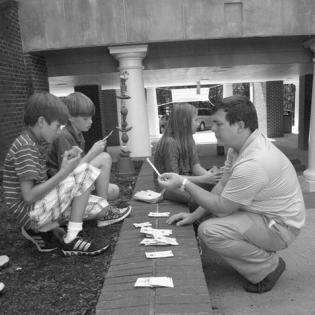Who Is a Philanthropist? Sharing Stories of Service
Community members share stories of experiences in philanthropy.
Author: Urban EdVenture Faculty
The learner will
- cite examples that show anyone can be a philanthropist.
- give examples of people serving others in a variety of ways.
- recognize that people serve for a variety of reasons.
- become aware that service of all types provides common rewards.
- Invite members of your community who serve in diverse organizations through a variety of methods to share their stories with the group.
- Prepare speakers for their visit by asking them to be ready to share what they do, how they got involved, what they needed to know, and why they choose to serve.
Volunteer, community
In a written reflection, answer the following questions: Who can be a philanthropist? Why do people choose to serve?
A Word About Reflection: Reflection may take the form of a whole class discussion, asking for volunteers to share after completing a reflection, or keeping written reflections private. The type of reflection can depend on several factors, including the time left after other activities are completed, the tone of the class, how personal the reflection topic may be, and how strong the class bond is.
Instructions
Before the day of the speaker visit, ask the youth to collect their own stories about ways they take action for the common good. They may ask their families about the organizations they support, as well as recall their involvement in service through school-led activities. Do not require all to share. Some may wish to share stories about receiving the philanthropy of others.
Before the speakers visit, you may wish to help youth prepare questions to ask the guests. Remind them of ways to show respectful attention and generous listening. Let them know that the guests represent nonprofits in the community that do philanthropic work that addresses needs. What they do makes the community better for all, and it is appropriate to thank the guest for their service.
Involve the youth in welcoming the guests at the door, bringing them to the meeting area, and introducing them. They may follow up with questions and words of appreciation.
In a written reflection after the guests leave, answer the following questions: Who can be a philanthropist? Why do people choose to serve?
